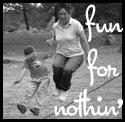
I've continued to be intrigued by a short article I read a month ago in Newsweek; the article told of two studies involving wine tastings. The first, conducted by writer Robin Goldstein, involved blind tastings of more than 500 wines by 500 tasters ranging from novices to wine experts. The wines ranged in price from $1.50 to $150. Wines were encased in brown paper bags so that the tasters didn't see labels; they simply rated the wines on merit, not perception. The result? Cheap wines often outperformed their $50 counterparts.
A similar study in January had tasters rating wines in which they were given both true and false prices for the wines (in other words, a $50 wine was told to be $5). The result? Testers almost always preferred what they thought to be a higher-priced wine.
Purely in the name of research, I recently revisited "Two-Buck Chuck," or Charles Shaw wine available only at Trader Joe's. This wine has gotten a lot of buzz since it was introduced several years ago, and I often see people buying cases of the bargain vino. This product began as a $1.99 bottle on the West coast, but here in Indiana, it's $2.99, so technically "Three-Buck Chuck." I'd tried, I believe, a Merlot years ago and thought it was horrid. Armed with the knowledge that I might have dismissed the wine simply based on its price, I recently tried a Shiraz. And, you know, I liked it.
I then remember reading an anecdote in a magazine, although I have no idea where I read it. Likely, it was one of the pieces of wisdom I gleaned from Glamour magazine back in high school. But here's the story: A woman with a flagging jewelry business found that no one was buying her pieces. So she asked her assistant to reduce the prices by 50 percent. The assistant instead accidentally doubled the price. The result? The pieces sold out. Consumers felt that the higher-priced items were more valuable.
I found myself doing this same thing last week when out with a friend, who also has a newborn. We stopped at Baby Gap, and I was contemplating a clearance-priced cotton sweater for Sylvia. I scraped back the "$6.99" clearance sticker to see the item's original price. If it was $29, I'd feel like I was really getting a bargain, and feel more compelled to snatch it up. If it was $19, I'd feel less so. The original price, however, didn't change anything about the sweater: cotton, striped, cardigan-style. Either it was worth $6.99 to me or it wasn't. The original value placed on it by executives at The Gap shouldn't affect that value.
In watching our budget, this is one area I find where I need to be extra diligent: Purchasing items based on their value to me, not assuming that higher prices mean better quality or more desirability.The first wine study, by the way, resulted in a book called The Wine Trials: 100 wines under $15 that beat $50 to $150 wines in brown-bag blind tastings. The book, which published earlier this month, might be worth reading, but Amazon is currently sold out. I suppose everyone's looking to be more diligent about disassociating price from perception!




2 comments:
It's true.
The reason department store make-up prices are so high is that when they try to drop the price too much, women stop buying it.
I read that article in Newsweek, too, and found it so interesting! -Julia
Post a Comment